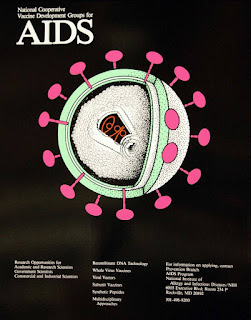new hiv test to detect hidden hiv virus in aids patients
DRRAM,HIV /AIDS,HEPATITIS ,SEX DISEASES & WEAKNESS expert,New Delhi,India, profdrram@gmail.com,+917838059592,+919832025033,ON WHATSAPP
Researchers, including one of Indian origin, have developed a new test that can detect 'hidden' HIV virus faster, less labour-intensive and less expensive than the current 'gold standard' test.HIV virus once inside body is not detected by good card antigen antibody tests or western blot or elisa test and even pcr test easily if in window period which may last from 21 days to 2 yrs in late responders.So to detect such hidden and dormant virus is really a challenge as HIV is only AIDS as symptoms of disease develops which may be late as from usual 8 to 10 yrs to 20 yrs in few patients.So detection after 3 wks to 2 yrs and clinical disease after 10-20 yrs and if patient on ARV virus may not be detectable but still virus is present in some cells so a life long treatment is advised as if treatment is stopped recurrance is common.
Phalguni Gupta, Professor at University of Pittsburgh in the US and senior author focused on these issue and develop a test to tell whether HIV is present in hidden or dormant form or not.HIV spreads by infecting CD4+ T cells, which are a type of white blood cell that plays a major role in protecting the body from infection.Once HIV therapy is working, it becomes critical to determine if the HIV DNA being detected by a test could actually create more virus and cause the person to relapse if therapy is stopped.
Therefore, the test must be able to show that the virus it detects can replicate -- typically by growing the virus from the sample.To date, the best test available to do this is called a "quantitative viral outgrowth assay," or Q-VOA.The new test that Gupta's team developed is faster, less labour intensive, and less expensive, according to the study.This new test is called TZA, it works by detecting a gene that is turned on only when replicating HIV is present, thereby flagging the virus for technicians to quantify.
The finding said that the test also requires a much smaller volume of blood.Gupta said,"Using this test, we demonstrated that asymptomatic patients on antiretroviral therapy carry a much larger HIV reservoir than previous estimates -- as much as 70 times what the Q-VOA test was detecting."
The study was published in the journal Nature Medicine
- Kidney stones universally present hazard in north india,dillution by water prevent it
- Steroid and placebo effect equally for mild persisting asthma with low sputum eosinophils
- Government wants to fix public healthcare staff shortages with ayush docs: will it work?
- Plea in hc for payment of salaries of edmc, north mcd teachers and doctors
- 7 indian pharma companies named in us lawsuit over inflating generic drug prices
- Woman in up dies after explosion in her mouth during treatment,what is diagnosis?
- Woman in up dies after explosion in her mouth during treatment,what is diagnosis?
- Woman in up dies after explosion in her mouth during treatment,what is diagnosis?
- Air pollution ! mothers organising rally in london,anaesthetist choosing gas,will india follow?
- Cardiac arrest is always not sudden as understood -a study


 Comments (
Comments ( Category (
Category ( Views (
Views (